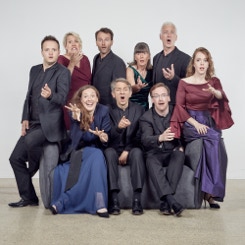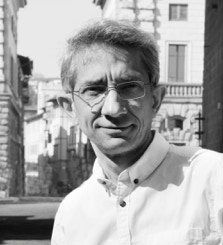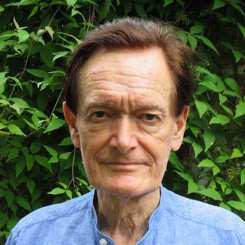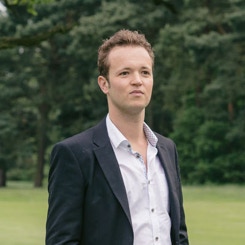“And in shaping corporeal things, the poet is much less able than the painter, and for invisible things less able than the musician.”
Leonardo, Paragone
The Annunciation / Leonardo da Vinci
Shaping the invisible
Leonardo da Vinci died May 2nd, 1519
Painter, sculptor, architect, stage-designer, engineer (military, civil, hydraulic), designer of war machines, pioneer of flight, anatomist, biologist, geologist, physicist, mathematician – and musician! We call him the ‘universal man’, the ultimate polymath. But he would be better seen as a ‘monomath’, as bringing all facets of his activity under one central embrace - the rational laws of God’s creation. These laws were mathematical, and it is on this foundation that he revered music as the only serious rival for his divine ‘science’ of painting.
Leonardo was regarded as a fine musician, accompanying his improvised poetry on the lira da braccio: indeed his first major career move (as a diplomatic ‘gift’ from Lorenzo de’ Medici in Florence to the duke in Milan) may have been as much for his musical accomplishments as his pictorial skills. He is said to have carried with him to Milan an outlandish lira in the shape of a horse’s skull and his manuscripts contain many half-designs for novel instruments - but only a few scraps of melody survive.
In his polemic paragone (comparison of the arts), Leonardo claimed that hearing was a lesser sense than sight, and that music “perishes immediately after its creation”. However, he recognised that “harmonic intervals” in music “circumscribe the proportionality of the component parts ... no differently from the linear contours of the limbs from which human beauty is generated”: in other words music and the body’s proportions arise from the same mathematical ratios. He declared that he would found his art on optical rules of a mathematical kind - “just as the musician has done with notes”. So the mathematical harmonies underlying Creation are made visible by painting, and audible by music. As Leonardo said, music and painting are “sisters”.
Where does that leave today’s musician? Instead of the familiar ‘Music from Leonardo’s time’, we have been inspired by his perpetual curiosity to think creatively about music that might resonate with the state of mind that led to his inventions. We began with types of subject-matter shared by Renaissance art and music – the Salvator Mundi, the Annunciation and the Last Supper along with the secular subjects of beloved ladies, grotesque characters and war. But as the notes below show, we found connections on all sorts of levels, and in the end we offer you music as a prism through which to look at his art or - in the other direction – images to help you feel (as a way of understanding) the music. It’s a completely subjective ploy, presenting aural fantasia dei vinci (a name for his knot designs) in such a way that both sides of the brain may find pleasure.
Martin Kemp and Robert Hollingworth
#daVinci500
© 2019


Director - Robert Hollingworth
Soprano
Anna Crookes, Rebecca Lea
with Helen Neeves, Kirsty Hopkins
Elspeth Piggott, Ana Beard-Fernandez
Alto
Eleanor Minney, Clare Wilkinson
with Peter Gritton, Guy James, Laura Baldwin
Rosie Parker, Sarah Lucy Penny
Tenor
Nicholas Mulroy, Matthew Long, Nicholas Hurndall Smith
with Christopher Bowen, Mark Dobell, Simon Wall
Bass
Greg Skidmore, Charles Gibbs
with Ben Rowarth, Jack Comerford
Stuart O’Hara, William Gaunt
Catherine Martin, Naomi Burrell – violin
Stefanie Heichelheim, Rachel Stott – viola
Peter McCarthy – bass violin
David Miller, Eligio Quinteiro – chitarrone
Catherine Pierron – harpsichord
Kirsty Whatley – harp
Keyboard supplied by Malcolm Greenhalgh
Tuning 1/6th comma meantone
Recorded Angel Studios, London September 20-22, 2018 except
for Agnus Dei and Alma Redemptoris recorded TomDickandDebbie Productions, Oxford, July 2012 with Charlotte Mobbs (sop),
Richard Wyn Roberts (alto) and Jimmy Holliday (bass)
Producer - Adrian Hunter
Engineer - Matthew Bartram / Assistant - Laura Beck
Project managed by Libby Percival and Jess Kinney at Percius


I FAGIOLINI
I Fagiolini has made a name for innovative productions of music for vocal ensemble. It has staged Handel with masks, Purcell with puppets, and in 2004 premiered The Full Monteverdi, a dramatised account of the composer’s Fourth Book of Madrigals (1603) by John La Bouchardière. In 2006 I Fagiolini toured its South African collaboration Simunye and in 2009 created Tallis in Wonderland, a new way of hearing polyphony with live and recorded voices. In 2012 I Fagiolini and CIRCA, an Australian contemporary circus company, launched How Like An Angel (HLAA) for the Cultural Olympiad, performing at the Perth International Arts Festival, New York and in English cathedrals. Betrayal: a polyphonic crime drama (with John La Bouchardière), sung to the music of Gesualdo was an immersive theatre work with dancers and singers set in ‘crime scenes’ and premiered at the Barbican in 2015. A year-long celebration of Monteverdi’s 450th anniversary in 2017 featured performances of The Other Vespers, L’Orfeo at venues including Glyndebourne, Cadogan Hall for the BBC Proms and Queen’s Hall for the Edinburgh International Festival. Orfeo continues in 2019 L’Orfeo (staged with masks) with stage director Thomas Guthrie.
I Fagiolini’s latest recordings on Decca Classics, Monteverdi: The Other Vespers and Amuse-Bouche (French Choral Delicacies) were both shortlisted for Gramophone Awards. The group is an Associate Ensemble at the University of York. I Fagiolini is managed worldwide by Percius. www.percius.co.uk
ROBERT
HOLLINGWORTH
Robert founded I Fagiolini in 1986 and has presented all their signature projects. Away from the group he has directed the English Concert, Academy of Ancient Music, BBC Concert Orchestra; and some of the world’s finest chamber choirs including Accentus, NDR Chor, the National Chamber Choir of Ireland, BBC Singers and the Danish National Vocal Ensemble. In 2017 he directed De Profundis’s latest release, rarely heard Vivanco: Missa Assumpsit Iesus & motets, for Hyperion. Other recent conducting projects include appearances with RIAS Kammerchor, Capella Cracoviensis, VOCES8, and a tour of Handel’s Messiah with Irish Baroque Orchestra. Robert takes over from Mark Deller as Artistic Director for the Stour Music festival from 2020, and is Reader in Music at the University of York where he directs ‘The 24’ and runs an MA in Solo-Voice Ensemble Singing.


MATTHEW LONG
TENOR
Tenor solo in 'Tempro la Cetra'
As a treble Matthew sang the role of Miles in Britten’s Turn of the Screw for Italian Opera houses. He studied music at the University of York, later winning a scholarship to the RCM, London where he was a Susan Chilcott Scholar and RPS Young Artist. In a varied singing career he has appeared as a soloist for the Boston Handel and Haydn society, RIAS Kammerchor Berlin, Copenhagen Philharmonic, Real Orquesta Sinfónica de Sevilla, Northern Sinfonia and Bournemouth Symphony Orchestra. Matthew’s debut solo disc with the LPO and accompanist Malcolm Martineau, Till the Stars Fall, was released in 2015: gems from the English song repertoire sit alongside folk songs in celebration of some of Britain’s finest music. Matthew is a keen photographer and follower of wildlife conservation. He has released a series of original children’s music CDs with his wife and daughter.
MARTIN
KEMP
Emeritus Professor in the History of Art at Trinity College. Oxford University, Martin was trained in Natural Sciences and Art History at Cambridge University and the Courtauld Institute, London. His 25 books include, The Science of Art. Optical Themes in Western Art from Brunelleschi to Seurat (Yale), and The Human Animal in Western Art and Science (Chicago). He has published and broadcast extensively on Leonardo da Vinci, including the prize-winning Leonardo da Vinci: The Marvellous Works of Nature and Man and Leonardo (both Oxford). His Christ to Coke: How image becomes icon (Oxford) looks at 11 representatives of types of icons across a wide range of public imagery. He wrote regularly for Nature, his essays for which have been published as Visualizations and developed in Seen and Unseen (both Oxford) in which his concept of ‘structural intuitions’ is explored. His most recent books are Art in History (Profile Books) and Mona Lisa with Giuseppe Pallanti (Oxford). Living with Leonardo (Thames and Hudson) was published in March 2018.
He has been a Trustee of the National Galleries of Scotland, The Victoria and Albert Museum and British Museum. He has curated and co-curated a series of exhibitions on Leonardo and other themes, including Ca 1492 at the National Gallery in Washington, Spectacular Bodies at the Hayward Gallery in London, Leonardo da Vinci. Experience, Experiment, Design at the Victoria and Albert Museum in 2006 and Seduced. Sex and Art from Antiquity to Now, Barbican Art Gallery London, 2007.
SPONSORS
This recording was made possible through a grant from the
I Fagiolini Charitable Trust following donations from the following:
Images
Salvator mundi - J MacGregor
Mona Lisa - R Harris
St John the Baptist - R Asher
The Last Supper - J Nash / M Hall
Man with a sheet of music - G Frankland
Five grotesque characters - S Glanville / M Taylor
The 'Vitruvian Man' - T Martin
The battle of Anghiari - D Sharp
Fantasia dei Vinci - R & R Thorpe
The Annunciation - A Tribble
La Scapigliata - A Hayman
Music
Howells - M & E Jenkins
Monteverdi, Era l’anima mia - N Warren & C Graham-Harrison
Daniel-Lesur - M McQuillan & A Elliman
Monteverdi, Tempro la cetra - A Butler
Victoria, Alma Redemptoris - B Rosewell
Vecchi - M Parry-Wingfield
Josquin des Pres - J Haddon
Bach - R Brown
Victoria, Unus ex discipulis meis - S & J Sell
Rubbra - S Paetke
Rore - S Price & S Reseghetti
A. Williams - K Cooper
Singers
Anna Crookes - S Brosnan & P Butler
Helen Neeves - A Murchie
Rebecca Lea - P Sackin & C Doepel
Clare Wilkinson - N Robinson & M Flinn
Eleanor Minney - L McAdam & L Lefanu
Nicholas Mulroy - N Wilson-Smith & C Law
Matthew Long - S Trist & J Elson
Nicholas Hurndall Smith - S Brosnan & J & M Bennett
Greg Skidmore - A Shepherd & H & R Rosenbaum
Charles Gibbs - L Doherty & A Shoults
Robert Hollingworth - L M White & B Reeves
and also S Lines, E Macdonald, J Walsh & M Davis.
Gillian Clark and Adrian Williams’ ‘Shaping the invisible’ was commissioned for this recording
and funded by the IFCT with funds from the Golsoncott Foundation and the RVW Trust.